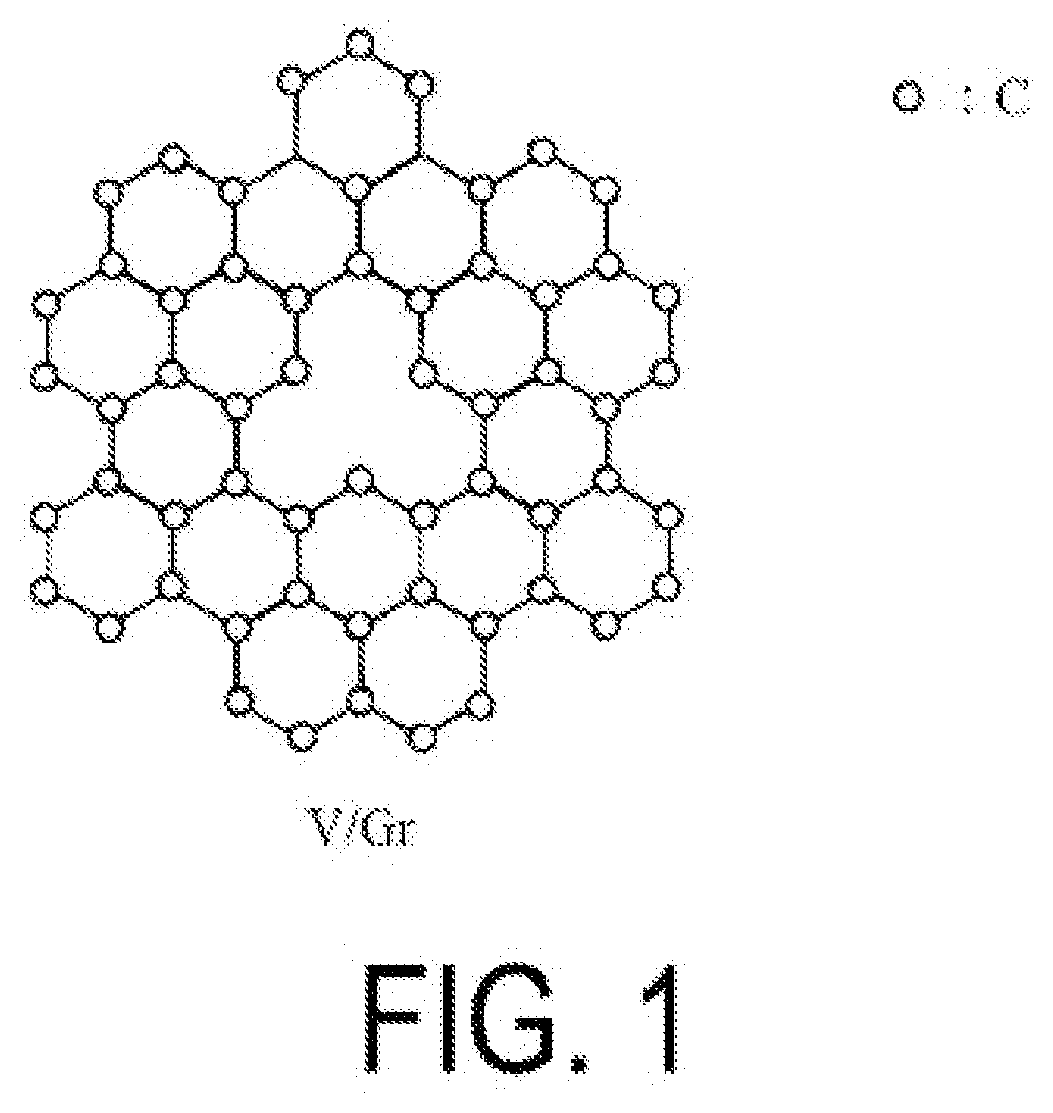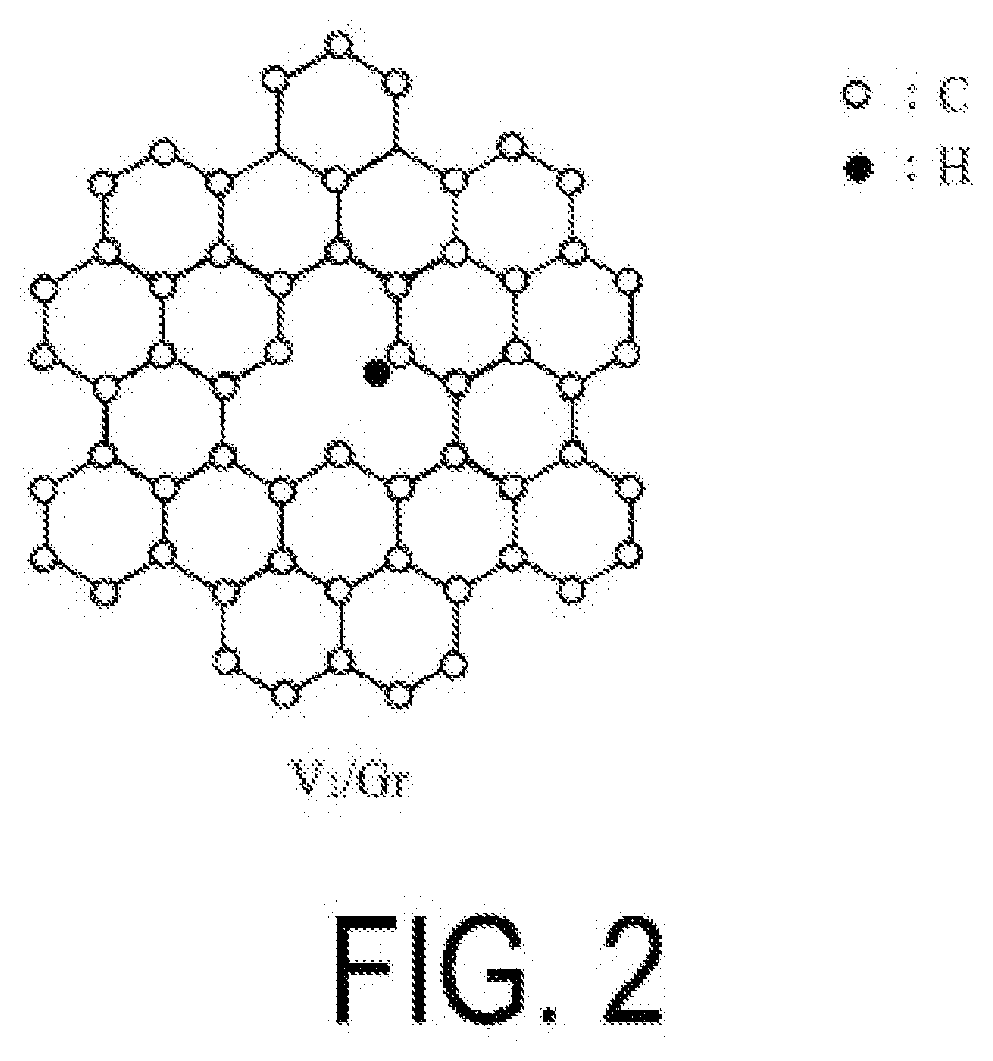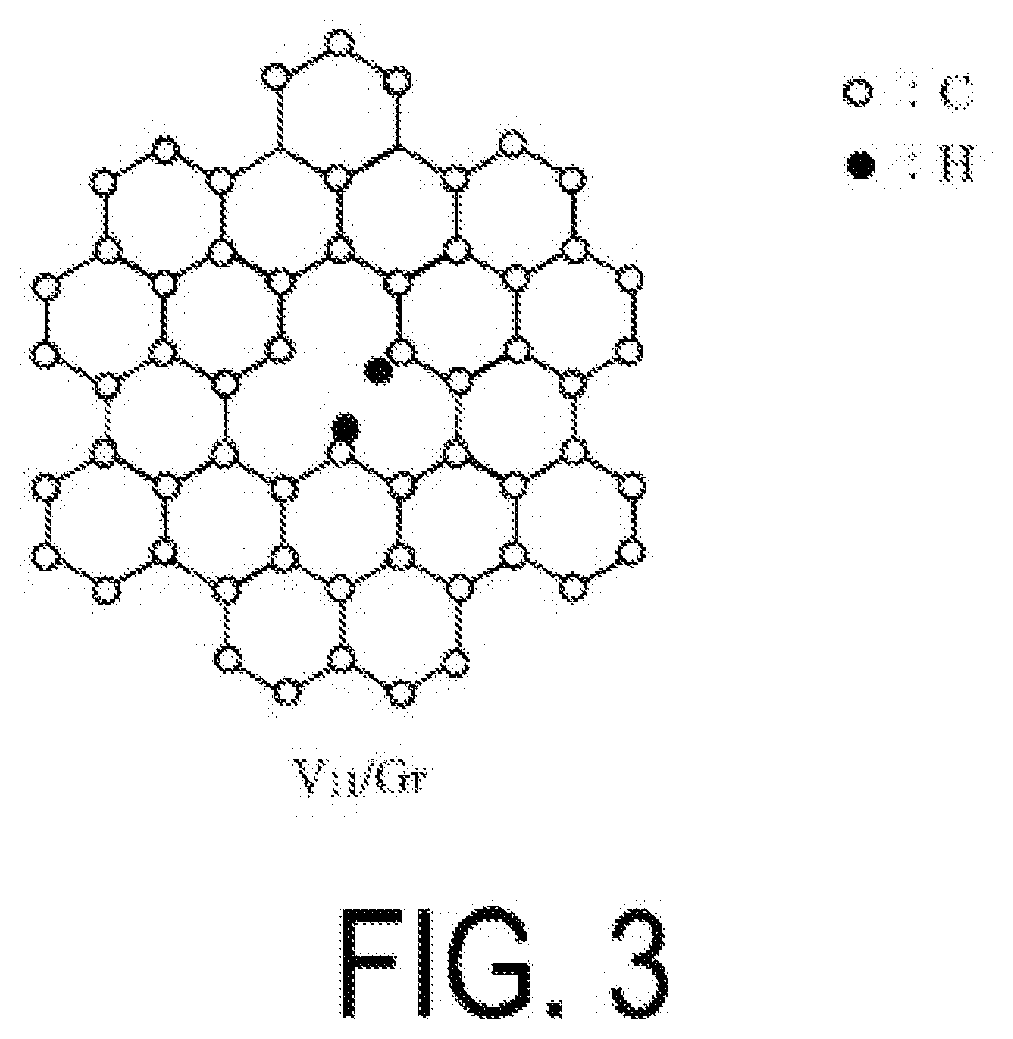Alkane dehydrogenation catalyst, and hydrogen production method using same
a hydrogen production method and catalyst technology, applied in the direction of hydrocarbon preparation catalysts, physical/chemical process catalysts, bulk chemical production, etc., can solve the problems of greenhouse effect, achieve high hydrogen density, without significant energy, and produce efficiently
- Summary
- Abstract
- Description
- Claims
- Application Information
AI Technical Summary
Benefits of technology
Problems solved by technology
Method used
Image
Examples
example 1
Production of Alkane Dehydrogenation Catalyst
Preparation of Raw Material Graphene
[0215]First, an explosive attached with an electric detonator was placed inside a pressure-resistant vessel (made of iron, volume: 15 m3) for detonation, and the vessel was sealed. As the explosive, 0.50 kg of a mixture of TNT and RDX (TNT / RDX (mass ratio)=50 / 50) was used. Next, the electric detonator was triggered, and the explosive was detonated in the vessel. Subsequently, the vessel was allowed to stand at room temperature for 24 hours, and the temperatures of the vessel and the inside of the vessel were lowered. After the cooling, a crude graphene (containing graphene and impurities generated by the detonation method described above) deposited on the inner wall of the vessel was collected.
[0216]The obtained crude graphene was washed once with water and subjected to drying under reduced pressure. Thereafter, a precipitate obtained by heating and washing with 20% hydrochloric acid and centrifuging wa...
example 2
Production of Alkane Dehydrogenation Catalyst
[0225]A catalyst (2) containing V / graphene was obtained in the same manner as in Example 1 with the exceptions that the raw material graphene used was not the graphene obtained by a detonation method but instead a multilayer epitaxial graphene synthesized by heating a SiC substrate (trade name “SiC Single Crystal wafer”, available from Nippon Steel & Sumikin Materials Co., Ltd.) at 2150° C. and that the irradiation time of argon ions was changed to 5 minutes. The amount of hydrogen contained in the catalyst (2) was 1.2×1016 atoms / cm2.
example 3
Production of Alkane Dehydrogenation Catalyst
[0226]A catalyst (3) containing VN / graphene and V / graphene was obtained using the same purified graphene as in Example 1 as the raw material graphene and in the same manner as in Example 1 with the exception that sputtering is performed by setting the position where an atomic vacancy is formed to the position of a carbon atom adjacent to a nitrogen atom in the purified graphene. The amount of hydrogen contained in the catalyst (3) was 9×1015 atoms / cm2. In addition, the nitrogen content was 4 wt. % of the total amount of the catalyst (3).
PUM
| Property | Measurement | Unit |
|---|---|---|
| Area | aaaaa | aaaaa |
| Structure | aaaaa | aaaaa |
| Energy | aaaaa | aaaaa |
Abstract
Description
Claims
Application Information
 Login to View More
Login to View More - R&D
- Intellectual Property
- Life Sciences
- Materials
- Tech Scout
- Unparalleled Data Quality
- Higher Quality Content
- 60% Fewer Hallucinations
Browse by: Latest US Patents, China's latest patents, Technical Efficacy Thesaurus, Application Domain, Technology Topic, Popular Technical Reports.
© 2025 PatSnap. All rights reserved.Legal|Privacy policy|Modern Slavery Act Transparency Statement|Sitemap|About US| Contact US: help@patsnap.com



